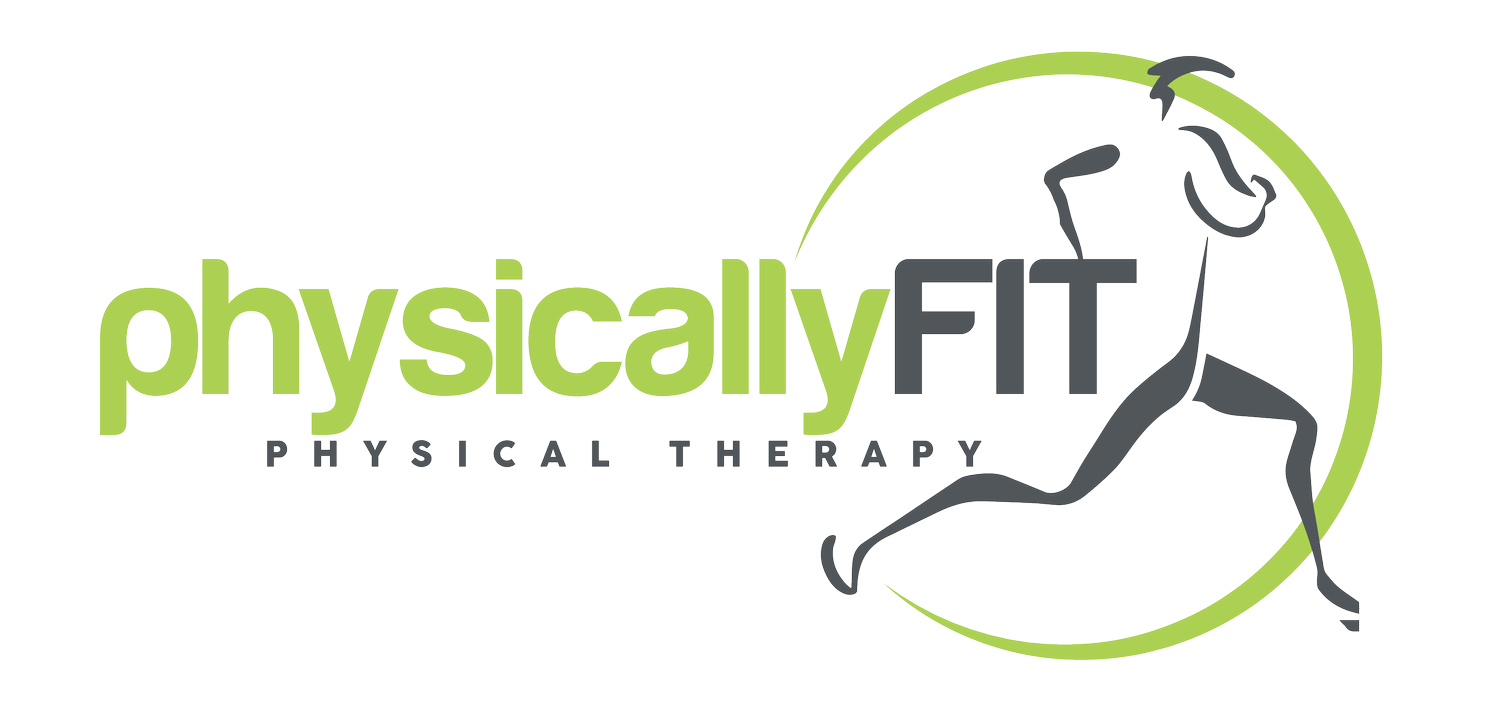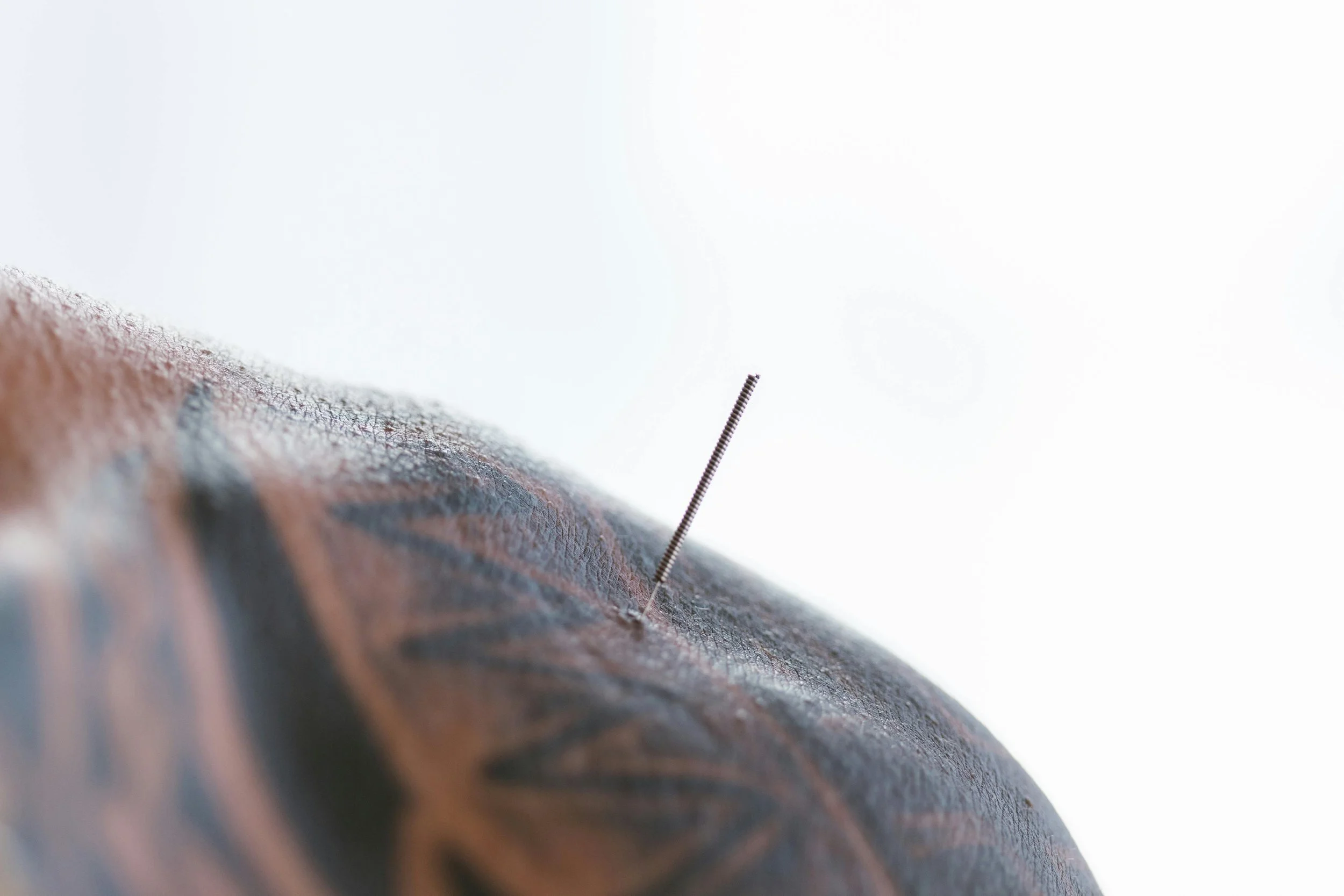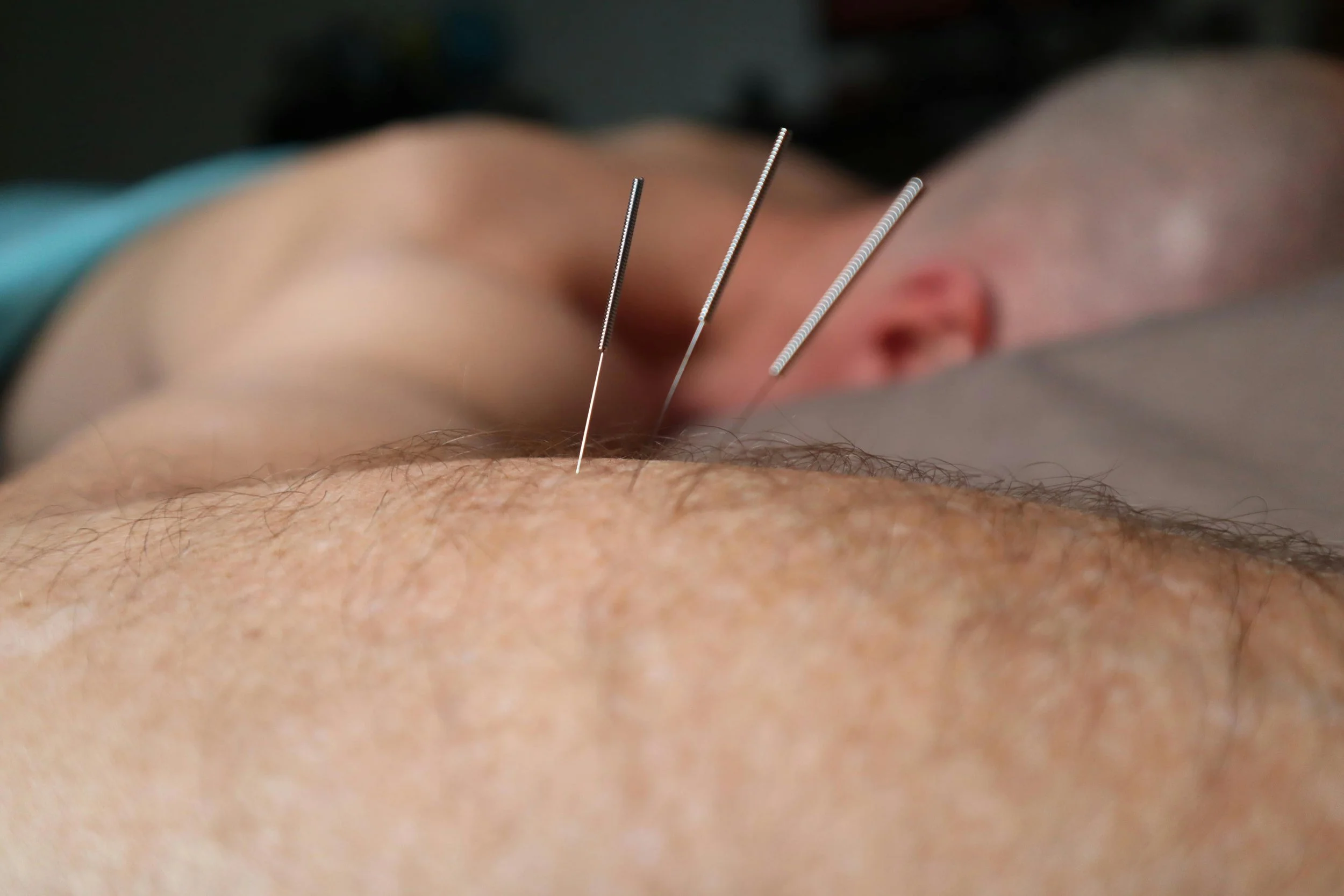How Often Can You Do Dry Needling: Complete Treatment Frequency Guide
Determining how often you can do dry needling isn’t a one-size-fits-all answer. The frequency of your dry needling sessions depends on several key factors, including:
your condition type
severity
and individual response to treatment.
While some patients with acute conditions may benefit from twice-weekly sessions initially, others with chronic pain might start with weekly appointments before transitioning to maintenance care.
Understanding proper dry needling frequency is crucial for maximizing therapeutic outcomes while avoiding over-treatment. This comprehensive guide will help you navigate the complexities of treatment scheduling, from initial sessions through long-term maintenance, ensuring you get the most from this effective treatment approach.
Key Takeaways
Most patients can receive dry needling 1-2 times per week for acute conditions
Chronic conditions typically require sessions spaced 3-7 days apart initially
Treatment frequency ranges from 4-6 sessions for most conditions
Sessions should be spaced at least 24-48 hours apart to allow muscle recovery
Maintenance sessions can be scheduled every 4-6 weeks after initial treatment
Individual response and condition severity determine optimal frequency
Understanding Dry Needling Treatment Frequency
Dry needling frequency depends on the specific condition being treated and your body’s unique response to this therapeutic technique. Licensed physical therapists and healthcare professionals customize treatment schedules based on multiple factors, including the chronicity of your symptoms, severity of muscle dysfunction, and your overall health status.
The foundation of dry needling therapy lies in targeting myofascial trigger points with thin needles to elicit a local twitch response. This process helps restore normal muscle function, increase blood flow, and relieve pain in the affected muscle. However, the muscle tissue needs adequate time to heal and adapt between sessions, making proper spacing essential for optimal results.
Acute injuries may require more frequent sessions initially, often 1-2 times per week, as the body responds more readily to intervention during the early stages of injury. Chronic conditions often start with weekly sessions then transition to maintenance care as symptoms improve and muscle function normalizes.
Licensed practitioners customize treatment schedules based on patient response, monitoring how your body reacts to each dry needling session. Sessions typically last 15-30 minutes depending on the treatment area and number of trigger points being addressed.
Recommended Session Intervals
Sessions are typically spaced 3-7 days apart for optimal muscle recovery and to maximize the benefits of dry needling. This interval allows sufficient time for the healing process to occur while maintaining therapeutic momentum. Most healthcare providers agree that a 24-48 hour minimum rest period between treatments is essential to prevent over-stimulation of the muscle tissue.
Weekly sessions are common during the initial treatment phase, particularly for patients experiencing chronic pain or complex musculoskeletal conditions. As your symptoms improve and muscle function returns to normal, your physical therapist may recommend bi-weekly or monthly sessions for maintenance.
The spacing of dry needling treatments also depends on your pain tolerance and how your body responds to the therapeutic technique. Some patients experience temporary discomfort or mild muscle soreness following treatment, which typically resolves within 24-48 hours. Monitoring these responses helps practitioners adjust session timing accordingly.
Acute Conditions Treatment Schedule
Recent injuries may benefit from 2 sessions per week initially, as the muscle tissue is more responsive to intervention during the acute phase. This aggressive approach can provide immediate relief and prevent the development of chronic muscle tension or trigger point formation.
Treatment typically continues for 2-4 weeks for acute conditions, with many patients experiencing significant relief within this timeframe. The rapid improvement often allows practitioners to reduce frequency to weekly sessions as symptoms subside and normal muscle function returns.
Rapid improvement often occurs within the first 2-3 sessions for acute conditions. This quick response is due to the muscle tissue’s enhanced healing capacity during the early stages of injury, when inflammation and muscle dysfunction haven’t become deeply entrenched.
Sessions may be reduced to weekly as symptoms improve, with some patients transitioning to as-needed maintenance care once their treatment goals are achieved. The key is monitoring progress and adjusting frequency based on sustained improvement.
Chronic Conditions Treatment Schedule
Long-standing issues usually start with weekly sessions, as chronic muscle dysfunction requires more time and consistent intervention to achieve lasting change. The muscle tissue in chronic conditions has often developed compensatory patterns that take longer to address effectively.
Treatment may extend over 6-8 weeks or longer for chronic conditions, depending on the complexity of the musculoskeletal pain and the presence of multiple trigger points. Patients with chronic pain often require a more gradual approach to avoid exacerbating symptoms.
Gradual spacing of sessions as the condition improves helps maintain progress while allowing the body to adapt to changes in muscle function. This approach prevents setbacks and promotes long-term stability of treatment gains.
Maintenance treatments every 4-6 weeks may be recommended for patients with chronic conditions to prevent symptom recurrence and maintain optimal muscle function. These follow-up sessions serve as a preventive measure and can catch any developing issues early.
Factors Affecting Treatment Frequency
Several key factors influence how often you can safely receive dry needling treatments. Understanding these variables helps both you and your healthcare provider determine the most appropriate treatment plan for your specific situation.
Severity and duration of the condition significantly influence session frequency. More severe or longstanding issues may require longer, more frequent treatment initially to address deeply ingrained muscle dysfunction and trigger point activity. Acute pain typically responds faster than chronic conditions.
Individual pain tolerance affects how often treatments can be performed. Some patients require extended recovery time between sessions due to increased sensitivity or slower healing responses. Your physical therapist will monitor your tolerance and adjust accordingly.
Patient response to previous sessions guides scheduling decisions. Lack of improvement after 2-3 sessions may prompt re-evaluation of frequency, technique, or treatment approach. Conversely, rapid improvement may allow for reduced frequency sooner than initially planned.
Overall health status and healing capacity impact frequency recommendations. Factors such as age, general fitness level, stress levels, and concurrent medical conditions all influence how quickly your body can recover between dry needling sessions.
Concurrent treatments and therapies may influence session timing. If you’re receiving other forms of physical therapy, massage, or manual therapy, your practitioner may adjust dry needling frequency to prevent over-treatment and optimize the combined therapeutic approach.
Frequency for Common Conditions
Different musculoskeletal conditions respond to varying treatment frequencies based on their underlying pathophysiology and typical healing patterns. Here’s a breakdown of common conditions and their typical dry needling schedules:
| Condition | Typical Sessions | Frequency | Duration |
|---|---|---|---|
| Plantar fasciitis | 4-6 sessions | 1-2 weeks apart | 4-8 weeks |
| Piriformis syndrome | 4-6 sessions | Weekly | 4-6 weeks |
| Tennis elbow | 4-12 sessions | Weekly initially | 6-12 weeks |
| Neck/shoulder tension | 3-6 sessions | Weekly | 3-6 weeks |
| Lower back pain | 6-8 sessions | Weekly | 6-12 weeks |
Plantar fasciitis typically requires 4-6 sessions spaced 1-2 weeks apart. The plantar fascia responds well to dry needling, with many patients experiencing significant relief after just a few sessions. The relatively superficial location of trigger points makes treatment efficient.
Piriformis syndrome responds well to 4-6 sessions with weekly intervals. This deep muscle requires precise needling technique and adequate recovery time between sessions to allow the muscle to release and restore normal function.
Tennis elbow may need 4-12 sessions depending on severity and chronicity. Chronic cases often require more extensive treatment due to the complex interplay of muscle imbalances and compensatory patterns that develop over time.
Neck and shoulder tension often improves with 3-6 weekly sessions. These areas typically respond quickly to dry needling due to good blood flow and the accessibility of trigger points for effective treatment.
Lower back pain may require 6-8 sessions over a 6-12 week period. The complexity of lumbar spine mechanics and the involvement of multiple muscle groups often necessitates a longer treatment course.
Recovery Time Between Sessions
A minimum 24-48 hours rest is recommended between treatments to allow proper muscle recovery and tissue adaptation. This recovery period is crucial for maximizing the benefits of dry needling while minimizing the risk of over-treatment or excessive muscle soreness.
Muscle soreness typically peaks 24 hours after treatment, similar to the delayed onset muscle soreness experienced after exercise. This temporary discomfort is a normal response to the therapeutic technique and indicates that the muscle tissue is responding to treatment.
Light activity and gentle stretching aid recovery between sessions by promoting blood flow and preventing muscle stiffness. However, avoid strenuous exercise for 24-48 hours post-treatment to allow the affected muscle to heal properly.
Activities to promote recovery include:
Gentle walking or light movement
Adequate hydration to support healing
Quality sleep to facilitate tissue repair
Application of heat or cold as recommended by your practitioner
Gentle stretching of the treated area
Avoid strenuous exercise for 24-48 hours post-treatment, as intense physical activity can interfere with the healing process and potentially exacerbate muscle soreness. Your healthcare provider will give you specific guidelines based on your treatment and condition.
Hydration and adequate sleep support healing between sessions by providing the body with the resources needed for tissue repair and regeneration. These factors are often overlooked but play a crucial role in treatment success.
Signs You May Need More Frequent Sessions
Certain indicators suggest that you might benefit from more frequent dry needling sessions, at least initially. Recognizing these signs helps optimize your treatment plan and achieve better therapeutic outcomes.
Persistent pain that returns quickly after treatment may indicate the need for more frequent sessions. If pain relief lasts less than 24-48 hours, your muscle tissue may need more intensive intervention to break the cycle of dysfunction.
Limited improvement after 2-3 initial sessions could suggest that weekly sessions aren’t sufficient for your condition. Some patients with complex or severe muscle dysfunction require twice-weekly treatments to achieve meaningful progress.
Multiple trigger points requiring extensive treatment often necessitate more frequent sessions to address all problematic areas effectively. When numerous muscle groups are involved, a more intensive approach may be required initially.
Chronic conditions with significant muscle dysfunction may benefit from increased frequency to overcome longstanding patterns of muscle tension and trigger point activity. These cases often require sustained intervention to achieve lasting change.
High stress levels affecting muscle tension patterns can interfere with treatment progress. Patients experiencing significant stress may need more frequent sessions to counteract the continuous muscle tension caused by stress responses.
Signs to Reduce Session Frequency
Recognizing when to reduce dry needling frequency is equally important for optimizing treatment outcomes and avoiding unnecessary intervention. Several positive indicators suggest it’s time to space sessions further apart.
Sustained pain relief lasting several days to weeks indicates that your muscle tissue is responding well to treatment and maintaining improved function between sessions. This suggests that less frequent maintenance care may be appropriate.
Improved range of motion and function demonstrates that the affected muscle is regaining normal movement patterns. When mobility improvements persist between sessions, frequency can often be reduced safely.
Decreased muscle tension and trigger point sensitivity shows that the underlying muscle dysfunction is resolving. As trigger points become less active and muscle tone normalizes, maintenance sessions may be sufficient.
Return to normal daily activities without pain is a strong indicator that treatment goals are being met. When you can perform usual activities comfortably, transitioning to maintenance care or stopping treatment may be appropriate.
Positive response to movement and exercise suggests that your muscle function has improved sufficiently to handle normal stresses. This is often the goal of dry needling therapy - restoring the muscle’s ability to function normally.
Maintenance Treatment Guidelines
Once initial treatment goals are achieved, maintenance dry needling sessions can help prevent symptom recurrence and maintain optimal muscle function. The frequency of maintenance care varies based on individual needs and condition characteristics.
Monthly sessions may prevent symptom recurrence for patients with conditions prone to returning, such as chronic neck tension or recurrent trigger points. This proactive approach can catch developing issues before they become problematic.
Quarterly treatments for well-managed chronic conditions provide ongoing support while allowing maximum independence between sessions. This frequency works well for stable conditions that respond consistently to treatment.
As-needed basis for patients with good self-management skills allows for flexible scheduling based on symptom patterns or activity demands. Athletes or active individuals might choose this approach, scheduling sessions around training cycles or competitions.
Regular assessment to determine ongoing treatment needs ensures that maintenance frequency remains appropriate as your condition evolves. Your healthcare provider should periodically evaluate whether continued treatment is necessary.
Integration with exercise programs for long-term success combines dry needling with active rehabilitation to maximize long-term outcomes. This approach often allows for reduced treatment frequency while maintaining benefits.
Safety Considerations for Frequency
Understanding safety considerations is crucial when determining how often you can do dry needling. Over-treatment poses real risks that can interfere with healing and potentially worsen symptoms.
Over-treatment can lead to increased muscle soreness that persists longer than the typical 24-48 hour window. When sessions are too frequent, the muscle tissue doesn’t have adequate time to recover, leading to cumulative soreness and potential inflammation.
Excessive frequency may cause needle site irritation or minor bruising that doesn’t resolve between sessions. Multiple needle insertions in the same area without sufficient healing time can lead to tissue sensitivity and discomfort.
Proper spacing allows tissue healing and adaptation to occur naturally. The muscle tissue needs time to process the changes initiated by dry needling and establish new, healthier movement patterns.
Individual tolerance varies for treatment frequency based on factors such as age, health status, pain tolerance, and healing capacity. What works well for one patient may be too aggressive or too conservative for another.
Professional guidance ensures safe treatment intervals through ongoing assessment and monitoring. Qualified practitioners use clinical guidelines and their experience to determine appropriate frequency while watching for signs of over-treatment.
Signs of over-treatment include:
Persistent soreness lasting more than 48 hours
Increased pain rather than improvement
Excessive bruising or needle site sensitivity
Fatigue or feeling worse after sessions
Diminishing returns from treatment
FAQ
Can I have dry needling every day? No, sessions should be spaced at least 24-48 hours apart to allow proper muscle recovery. Daily treatments can lead to over-stimulation of the muscle tissue and may actually impede the healing process.
How many sessions will I need total? Most conditions require 4-6 sessions, but this varies individually based on the condition’s severity, chronicity, and your response to treatment. Your healthcare provider will develop a treatment plan specific to your needs.
What happens if I have sessions too close together? This may increase muscle soreness and reduce treatment effectiveness. Over-treatment can lead to persistent discomfort, tissue irritation, and diminished therapeutic benefits.
When will I see results? Some patients notice immediate relief after one session, while others need 2-3 treatments to experience significant improvement. The timeline depends on your condition and individual healing response.
Can I exercise between sessions? Light activity is encouraged, but avoid intense workouts for 24-48 hours after treatment. Gentle stretching and normal daily activities actually support the healing process between sessions.
How long do effects last? Benefits may last days to weeks, with longer duration typically achieved after multiple sessions. As treatment progresses, the effects usually become more sustained and long-lasting.
This comprehensive understanding of dry needling frequency helps ensure you receive optimal benefits while maintaining safety throughout your treatment course. Working closely with a qualified practitioner who monitors your progress and adjusts frequency accordingly is essential for achieving the best possible therapeutic outcomes.






